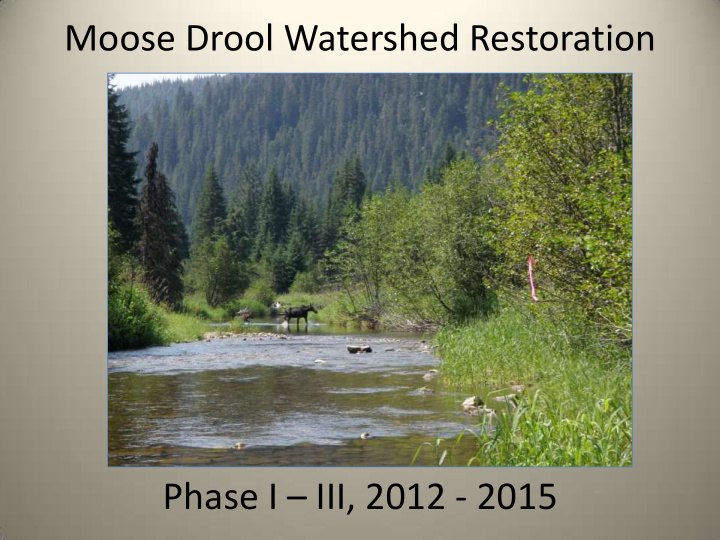



Moose Drool Watershed Restoration Phase I – III, 2012 - 2015
Restoration • Reestablishment of the structure and function of an ecosystem, including its natural diversity • “ … plunges, backwaters, large woody debris and streamside vegetation, cobble, gravel, even sand and silt, shear lines, depth, pockets, undercuts, and an optimal relationship between this diversity and year-long trophic and habitat requirements (Griffith 1993). ”
Where is it?
What is it? • 2012 decision • assess • plan • and improve the ecological conditions of the upper Little North Fork Coeur d’Alene River (LNFCDAR).
Why do it? • Restoring resilient ecosystems • Streams do not meet water quality standards • High priority for watershed restoration • Forest Plan direction – INFS WR-1 – INFS FW-1
STRESSORS Roads and Crossings
STRESSORS Riparian Roads
STRESSORS Riparian Harvest
STRESSORS Railway/Dike
STRESSORS Dispersed and Illegal Recreation
Implementation Methods • Method I • Method II • Floodplain restoration • LWD placement • Stream channel modification
After Before
After Before
After Before
Moose Drool – Pre-Implementation
Moose Drool – Post-Implementation
By the Numbers… Project Metrics for 2012 - 2015 Miles of Road Decommissioned 97 miles Miles of Road Fully Recontoured 51 miles Miles of Stream Habitat Enhanced (2014 only) 26 miles Miles of Floodplain Restored (2014 only) 3.4 miles Large Woody Debris Pieces >1800 Excavated Channel Crossings 141 Recontoured Headwater Swales 123 Local jobs (2014 only) 65 contractors on site Pieces of Heavy Equipment Rented Locally 26 (~$468,000) (2014) Overall Contract Costs $2,048,900
Video Time! • http://youtu.be/mIQXfgjrg8E
Work Still Needed: Stream Restoration
Work Still Needed: Relocation of the 1532
Recommend
More recommend